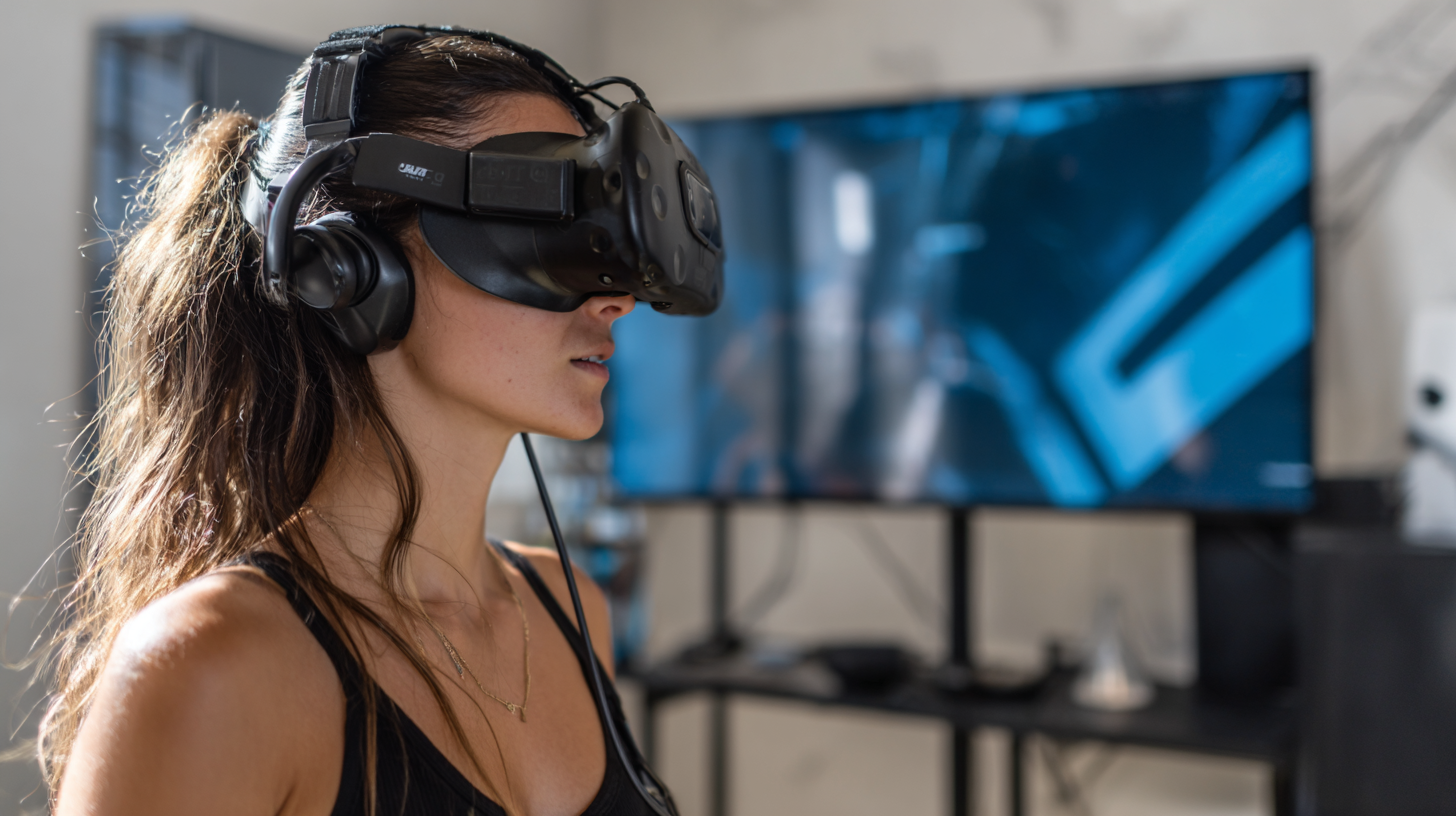 Virtual Reality Technology is rapidly transforming various industries, from gaming to healthcare, offering immersive experiences that enhance user engagement. According to a report by the International Data Corporation (IDC), global spending on virtual reality is expected to reach $12 billion by 2024, reflecting its increasing significance in both consumer and enterprise sectors.
Virtual Reality Technology is rapidly transforming various industries, from gaming to healthcare, offering immersive experiences that enhance user engagement. According to a report by the International Data Corporation (IDC), global spending on virtual reality is expected to reach $12 billion by 2024, reflecting its increasing significance in both consumer and enterprise sectors.
However, despite its promising potential, many beginners face challenges in navigating this complex landscape, leading to common problems such as hardware compatibility, content availability, and user experience hurdles. This blog aims to tackle these issues head-on, providing a step-by-step tutorial designed to empower newcomers with the skills and knowledge needed to master Virtual Reality Technology effectively.
By addressing these challenges, we aim to demystify the process and allow users to fully leverage the benefits of this innovative technology.
Virtual reality (VR) is an exciting frontier that offers immersive experiences like never before. For beginners, understanding the basics of VR technology is crucial for making the most of this innovative medium. At its core, VR allows users to don a headset and step into a three-dimensional world, providing a unique interactive experience that traditional media simply can't replicate. As you venture into this digital landscape, you'll find that it encompasses a variety of applications, from gaming and movies to virtual environments designed for social interaction.
One of the main attractions of VR is the Metaverse, a concept that refers to community-driven virtual spaces where users can engage in multiple activities. These environments not only facilitate gaming but also allow individuals to meet and collaborate, fostering a sense of shared experience in a digital setting. As you begin your journey into virtual reality, it's important to familiarize yourself with the key technologies, popular platforms, and the types of content available. By doing so, you'll be well-equipped to explore this captivating realm, unlocking a world of possibilities that can significantly enhance your entertainment and social interactions.
| Aspect | Description | Importance |
|---|---|---|
| Definition of VR | Virtual Reality (VR) is a simulated experience that can be similar to or completely different from the real world. | High |
| Types of VR | There are different types including fully immersive, non-immersive, and augmented reality experiences. | Medium |
| Applications of VR | Used in gaming, training simulations, education, architecture, and therapy. | High |
| VR Hardware | Includes headsets, sensors, and input devices. | High |
| VR Software | Refers to applications and programs that create VR experiences. | High |
| Getting Started | Begin by choosing a VR headset and installing necessary software. | Medium |
| Future Trends | Increased realism, affordability, and integration in various sectors. | High |
When diving into the world of virtual reality (VR), having the right equipment is crucial to enhance your experience. The essential components for any VR setup typically include a compatible headset, motion controllers, and a powerful computer or console. Popular choices for headsets include the Oculus Quest 2 and the HTC Vive, each providing immersive experiences with varying levels of comfort and technology. Selecting the right headset depends on your budget and how you plan to use it—whether for gaming, simulations, or educational purposes.

Additionally, having high-quality motion controllers can significantly improve your interactions within VR environments. These controllers allow for accurate tracking of hand movements, enabling you to manipulate virtual objects with ease. It’s also wise to invest in accessories like VR gloves or treadmills for a more engaging experience. Lastly, ensure your computer meets the recommended specifications for running VR applications smoothly; this often means having a robust graphics card and sufficient RAM. By carefully choosing the right equipment, you can set the stage for a rewarding virtual reality journey.
As wireless VR headsets continue to surge in popularity, they are transforming the gaming landscape by delivering seamless and immersive experiences for users. Recent industry reports indicate that the global virtual reality gaming market is expected to reach approximately $57 billion by 2032, driven largely by advancements in wireless technology. This evolution is crucial, as traditional wired setups often present challenges such as tangled cables and limited mobility, which can detract from the overall gaming experience.
The rise of wireless VR technology allows gamers to enjoy a more fluid and engaging interaction with virtual environments. This technological shift not only enhances user experience but also promotes wider adoption among casual gamers, resulting in a significant increase in market share. Furthermore, with features designed to eliminate latency and improve graphics quality, wireless headsets are becoming indispensable tools for immersive gaming sessions. As we set up our virtual reality spaces, focusing on optimizing our environments will be key to ensuring that we harness the full potential of these innovative technologies and immerse ourselves in the future of gaming.
This bar chart illustrates the increasing adoption rates of virtual reality technology among users from 2017 to 2023, showcasing a significant growth in interest and utilization of VR experiences over the years.
Choosing the right VR software is essential for beginners looking to dive into the world of virtual reality. With numerous options available, it’s vital to identify the software that aligns with both your interests and skill level. Popular choices like Oculus Home or SteamVR provide extensive libraries of experiences that cater to various genres, from gaming and education to social interactions. For newcomers, user-friendly platforms with intuitive interfaces are particularly beneficial, as they minimize the learning curve and help build confidence in navigation and usage.

Another great option for beginners is VRChat, a social platform that enables users to interact in virtual environments. This software not only offers a fun way to meet others but also allows for exploration of different worlds created by users. Additionally, platforms like Google Earth VR and Tilt Brush introduce creative and educational elements, letting users experience art and geography in immersive ways.
Ultimately, the best VR software for beginners should blend accessibility with engaging content, ensuring an enjoyable introduction to the expansive realm of virtual reality.
Getting started with virtual reality (VR) can be an exhilarating yet daunting experience for beginners. Understanding the basic techniques for navigation within VR environments is crucial to making the most of this immersive technology. First, familiarize yourself with your VR controller. Whether you are using hand controllers or a mouse and keyboard setup, understanding the buttons and their functions is essential. Spend some time practicing basic movements like selecting, grabbing, and interacting with objects in a virtual space.
Next, learn how to move within the VR environment. This can often be accomplished using teleportation methods or walking simulations, depending on the application. The teleportation technique generally involves pointing to a destination within the virtual world and pressing a designated button to instantly move there. This method minimizes motion sickness and allows for nuanced exploration. If your setup supports full-motion tracking, practice walking around within the designated play area, ensuring that you are aware of your physical surroundings to avoid accidents. By mastering these fundamental navigation techniques, you’ll pave the way to a more enjoyable and engaging VR experience.
